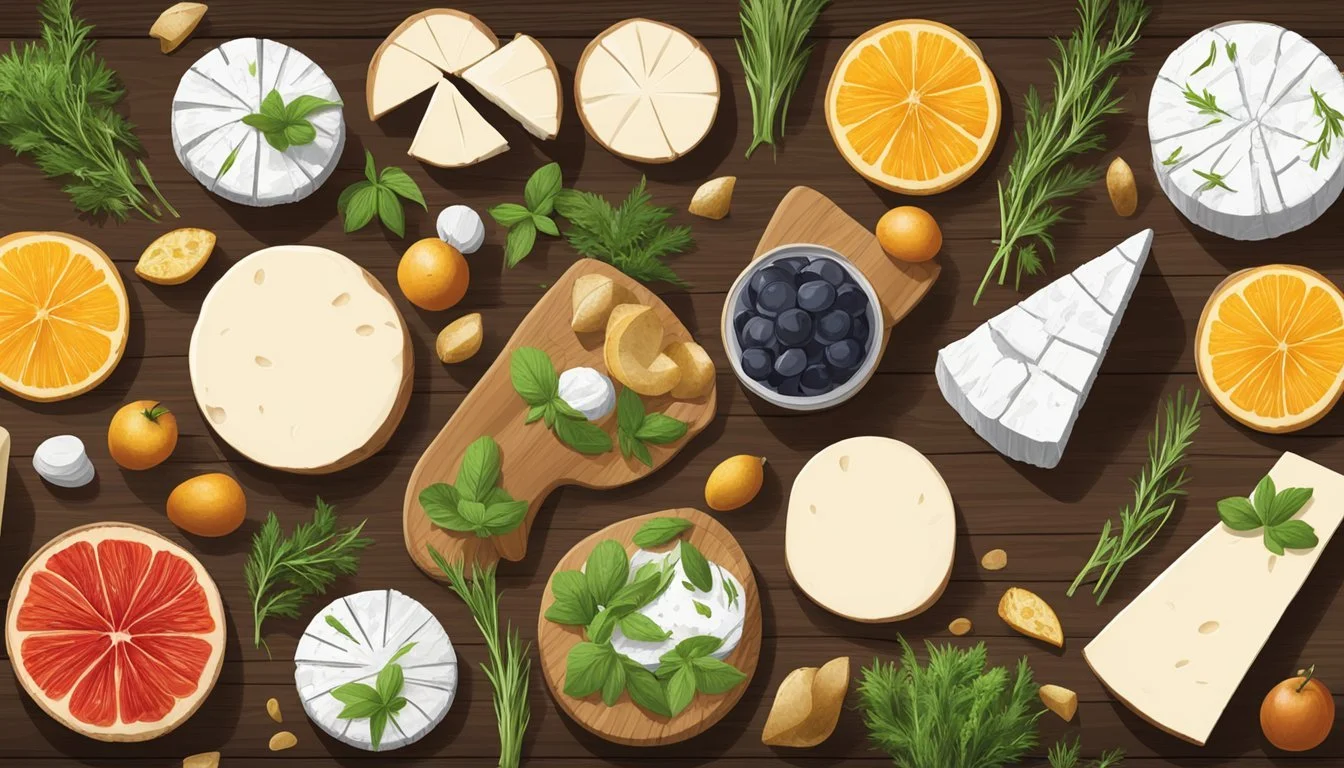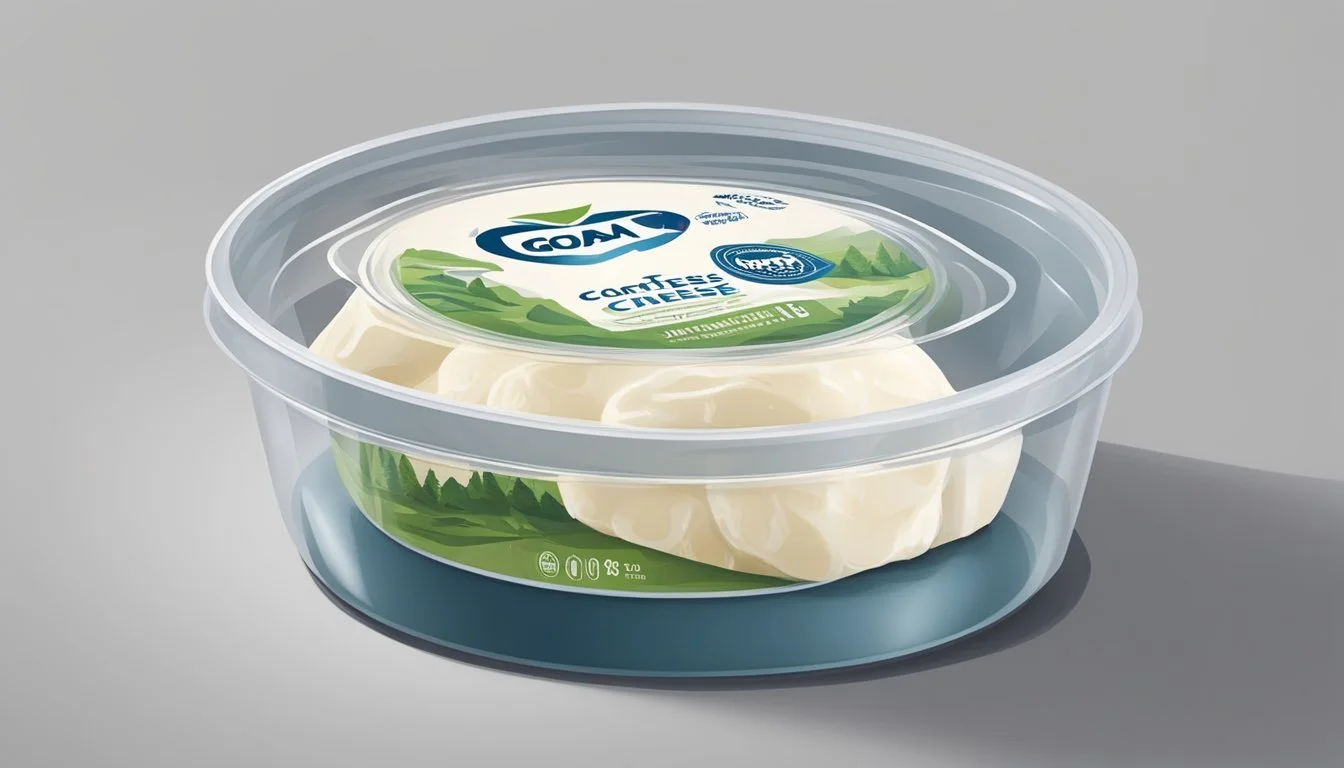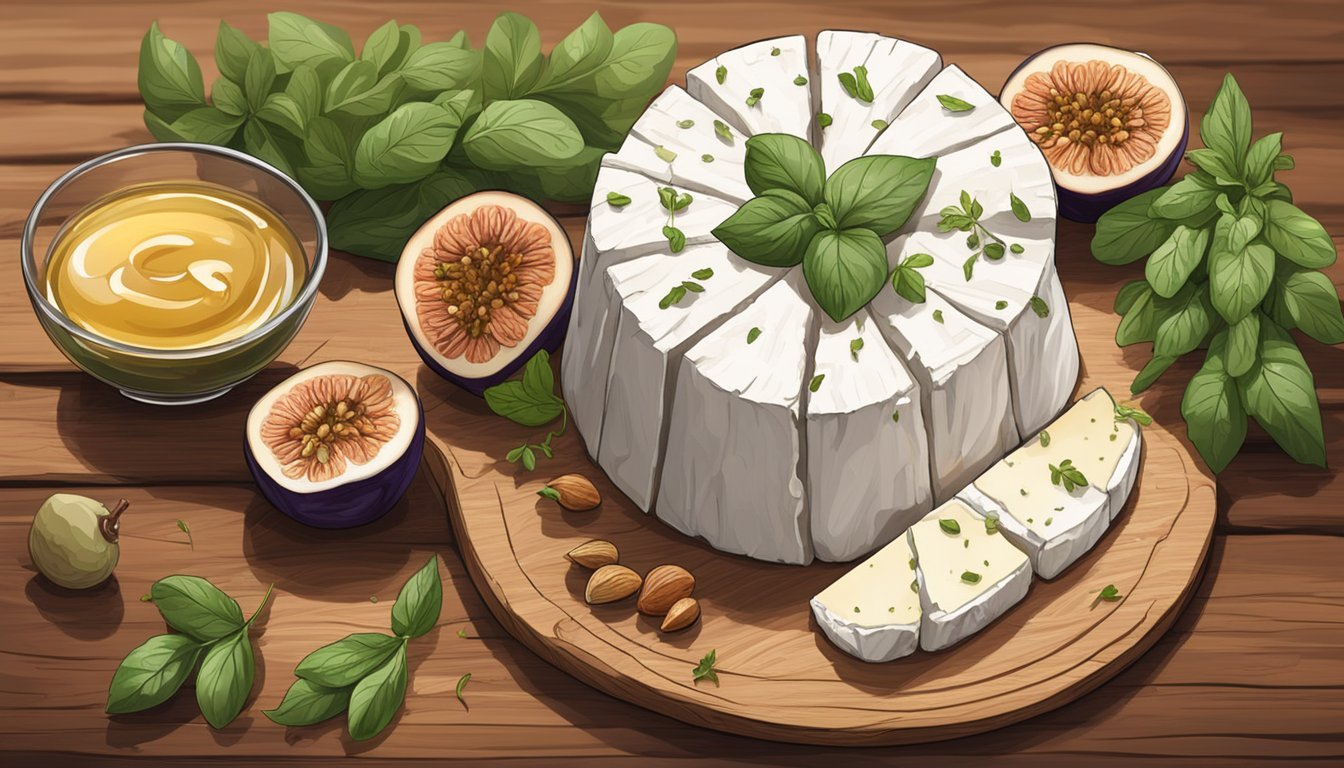Does Goat Cheese Go Bad?
Understanding the Shelf Life and Spoilage Signs
Goat cheese (What wine goes well with cheese?), celebrated for its distinct tangy flavor and creamy texture, is a versatile dairy product that can elevate many culinary creations. However, like all dairy products, goat cheese can go bad, a concern for connoisseurs and casual consumers alike. The perishability of this cheese variant depends on several factors, including its moisture content, packaging, and storage conditions. Fresh goat cheese has a relatively short shelf life due to its high moisture content, making it susceptible to spoilage if not stored properly.
Understanding the shelf life of goat cheese is critical to enjoying its rich taste without risking foodborne illness. Semi-hard to semi-soft types of goat cheese—such as Bucheron and Crottin—can maintain peak quality for a few weeks past their expiration dates if they remain unopened. Once opened, they should be consumed within 1 to 3 weeks, considering the softer the cheese, the quicker it should be eaten. Proper storage in the fridge is key to prolonging its freshness; if kept airtight and at a consistent temperature, goat cheese's lifespan can be extended.
The signs of spoilage in goat cheese are similar to those in other cheeses. Visual cues like mold growth or discoloration, a slimy texture, or an off-putting smell are clear indicators that the cheese should not be consumed. While these characteristics can help in identifying spoiled goat cheese, it is always advisable to err on the side of caution and discard any cheese that shows signs of degradation.
Composition and Varieties of Goat Cheese
Goat cheese, known for its distinct tangy flavor, is produced in a variety of forms ranging from soft and spreadable to firm and aged. The composition and type of goat cheese affect its texture, taste, and culinary uses.
Types of Goat Cheese
Goat cheese comes in various types, each with a unique texture, taste, and aging process. Common varieties include:
** fresh cheeses:**
Chèvre: Creamy and soft with a mild, tangy flavor.
Crottin: Often aged, with a firmer texture and nutty taste.
** aged cheeses:**
Gouda: Harder textured with a sweet, caramel-like flavor.
Feta: Brined, crumbly, and tangy.
Comparing Goat Cheese and Cream Cheese
Texture: Goat cheese is typically crumblier and less creamy than cream cheese.
Flavor: It has a distinctive tart taste, while cream cheese is milder and sweeter.
Fat contents: Cream cheese generally has higher fat content and a smoother consistency.
Differences Between Goat Cheese and Other Soft Cheeses
Compared to soft cheeses like ricotta or mascarpone, goat cheese has a stronger, tangier flavor and a less creamy texture.
Against blue cheese, it lacks the intense blue veining and sharp, piquant taste characteristic of blue cheeses.
Soft-ripened goat cheeses, such as Boucheron, differ from other soft cheeses like Brie or Camembert in their distinctive tangy goat milk flavor profile and sometimes firmer texture.
Storage Practices for Maximum Freshness
To ensure that goat cheese retains its quality and flavor, it is crucial to adhere to optimal storage practices. These not only extend the shelf life of the cheese but also maintain its taste and texture.
Ideal Storage Conditions
Goat cheese thrives in a storage environment that balances temperature and humidity. It should be stored at a temperature that’s just above freezing, typically 35°F to 40°F (2°C to 4°C), imitating the conditions of a cave. Relative humidity should be maintained at a moderate level to prevent drying out the cheese.
Refrigeration Requirements
For refrigeration, goat cheese is best kept in the coldest part of the refrigerator, such as the bottom shelf or a designated cheese drawer. Wrapping the cheese in cheese paper, wax paper, or plastic wrap and then placing it in an airtight container prevents air exposure that could lead to spoilage.
Soft goat cheese: Should be consumed within 7-10 days after opening.
Hard goat cheese: Can be stored for several weeks.
Extended Preservation Methods
To freeze goat cheese, firm varieties are better suited than soft ones; however, freezing can alter texture. Here are the steps:
Wrap the cheese in plastic wrap or aluminum foil.
Place the wrapped cheese in an airtight container or freezer bag.
Label with the date to keep track of how long it's been stored.
Note: Thaw frozen goat cheese in the refrigerator overnight before using. Freezing is generally not recommended for soft, creamy varieties, as it can lead to texture changes that might affect the quality.
Understanding Spoilage and Food Safety
When goat cheese spoils, it presents certain identifiable signs and poses health risks if consumed. Recognizing these can help maintain food safety and prevent foodborne illness.
Signs of Spoilage in Goat Cheese
Smell: Spoiled goat cheese often emits an unpleasant odor that is a strong signal of spoilage. It may vary from sour to an excessively earthy scent, not typical of fresh goat cheese.
Texture: The presence of a slimy or sticky film, or a texture that deviates significantly from the cheese’s original creaminess, can indicate bacterial growth and spoilage.
Color and Discoloration: Fresh goat cheese usually has a pure white or ivory color. The development of mold or unusual spots of green, blue, or black is a sure sign that the cheese should not be eaten.
Mold Growth: While some cheeses have mold as part of their aging process, unscheduled mold growth, particularly in goat cheese, shows contamination and spoilage.
Expiration Date: Always check the cheese's expiration date. Consuming the product beyond this date increases the risk of encountering spoiled cheese.
Health Risks of Consuming Spoiled Cheese
Spoiled goat cheese can harbor harmful bacteria leading to food poisoning. Symptoms may include:
Nausea
Vomiting
Diarrhea
Abdominal pain
Consuming contaminated cheese risks significant health issues, and one must prioritize food safety to avoid potential adverse effects.
Extending the Life of Goat Cheese
Maintaining the quality of goat cheese significantly depends on the storage methods applied. With proper techniques, one can extend its shelf life beyond the expected time frames.
Freezing and Its Effect on Quality
Freezing goat cheese can extend its shelf life for up to six months. However, freezing is more suitable for aged goat cheese because it has a lower moisture content compared to fresh goat cheese. When freezing, it's crucial to:
Wrap the cheese tightly in plastic wrap or aluminum foil.
Place it in an airtight container or heavy-duty freezer bag.
The texture of the goat cheese may change once frozen, potentially becoming crumblier upon thawing. Freezing is ideal for goat cheese intended for cooked dishes where textural changes are less noticeable.
Shelf Life After Opening
Upon opening, goat cheese should be consumed within 1 to 3 weeks for the best quality. To maintain shelf life:
Store goat cheese in the refrigerator at 40°F (4°C) or colder.
Keep it in its original packaging if it's resealable, or wrap it in wax paper or parchment paper, and then place in a plastic bag.
Different types of goat cheese have varying shelf lives after opening. Semi-soft to semi-hard varieties may preserve their quality for a few weeks past their expiratory dates, while softer types degrade faster.
Culinary Applications of Goat Cheese
Goat cheese, known for its creamy texture and tangy flavor, is highly versatile in the culinary world. It serves both as a key ingredient and a refined accent in various dishes, adding a distinct richness and depth to culinary creations.
Goat Cheese in Salads and Appetizers
In the realm of starters, goat cheese excels as a spread for artisanal bread or crackers, perfectly complementing the crisp texture with its creamy softness. It's often used to create a harmonious balance in salads, adding a touch of acidity which contrasts nicely with the fresh vegetables. Common salad variations include:
Mixed Greens with Goat Cheese: Tossed with vinaigrette, nuts, and seasonal fruits.
Beetroot and Goat Cheese Salad: Paired for their earthy and tangy flavor dynamics.
As a dip, goat cheese may be combined with herbs and spices to enhance its naturally robust notes, serving as delightful fare for social gatherings.
Using Goat Cheese in Main Dishes
Moving on to main courses, goat cheese demonstrates its flexibility in hot dishes such as pizzas and pasta dishes. When used as a topping on pizzas, goat cheese melts into an irresistible, gooey texture, providing a rich counterpoint to vegetable toppings or cured meats. For pasta, it can be melted into sauces, creating a decadently creamy alfredo or used in its crumbled form for a lighter touch that still carries flavorful impact.
Notably, chefs favor goat cheese for its characteristics that pair well with a range of ingredients, from sun-dried tomatoes to olives, making it a standout in rustic pasta recipes. The cheese’s ability to take on and enhance the flavors of herbs and spices makes it a choice ingredient for inventive dishes beyond traditional European cuisine.






